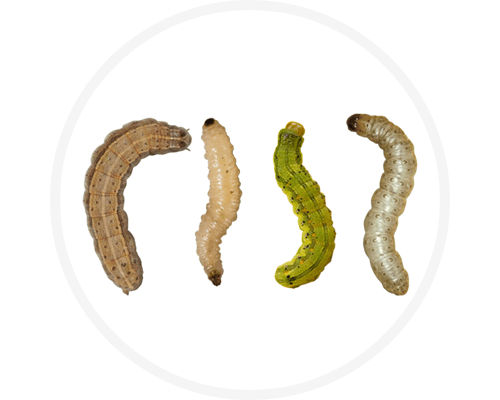5 MIN READ
Pest Management
July 30, 2022
Pest management requires a holistic approach to combating yield-impacting pests. This focuses on monitoring the life cycles and prevalence of pests to determine the best pest control methods for the current and following growing season.
MINIMIZE RISK, MAXIMIZE YIELDS
Prior agronomic practices, like planting corn-on-corn, can create significantly higher pest pressure than in fields previously rotated with other crops.
To get more corn per acre, having a solid understanding of the level of pressure and type of pests is key for choosing the best corn traits and agronomic practices to address these challenges.

BEST PRACTICES FOR LONG-TERM CONTROL
A well-planned approach to pest control can not only help you get the most out of this year's crop, it can also help manage insect pressure for years to come. Watch this video to see Bayer Learning Center Manager Troy Coziahr give farmers helpful tips on how to incorporate an insect resistance management program on their farm.
PREVENTION
Use the best agronomic management practices, in conjunction with the appropriate seed product, to help obtain the greatest yield benefits.
Use seed products, seeding rates and planting technologies appropriate for each specific crop and geographical area. As much as possible, manage the crop to avoid plant stress.
- Employ appropriate scouting techniques and treatment decisions to preserve the beneficial insects that can provide additional insect pest control.
- Manage for appropriate maturity and harvest schedules. Destroy crop residue immediately after harvest to avoid regrowth and minimize selection for resistance in late-season infestations.
- Use soil management practices that encourage destruction of over-wintering pests.
- Use proper crop rotation practices and target pests with multiple modes of action to make it more difficult for pests to adapt. In areas where crop rotation is not practiced, or where rotation occurs but high pest populations are observed, the use of products with multiple modes of action, such as SmartStax PRO with RNAi Technology, is strongly recommended.
MONITORING PESTS
Carefully monitor fields for all pests to determine the need for remedial insecticide treatments. For target pests, scouting techniques and supplemental treatment decisions should take into account the fact that larvae must hatch and feed before they will be affected by the B.t. protein(s). Fields should be scouting regularly, following periods of heavy or sustained egg lay, especially during bloom, to determine if significant larval survival has occurred.